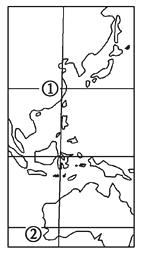问题
单项选择题 案例分析题
下图中①、②是两个城市的代码。读图完成小题。

①、②两城市都地处中纬度沿海地区,但气候类型不同,其主要原因是()
A.太阳辐射差异
B.大气环流不同
C.地面状况不同
D.沿岸洋流不同
答案
参考答案:B
解析:
①城市为北半球亚热带季风气候,受季风环流影响,而②城市是南半球的地中海气候,是受气压带和风带交替影响,故其气候不同的成因是大气环流不同。
下图中①、②是两个城市的代码。读图完成小题。

①、②两城市都地处中纬度沿海地区,但气候类型不同,其主要原因是()
A.太阳辐射差异
B.大气环流不同
C.地面状况不同
D.沿岸洋流不同
参考答案:B
解析:
①城市为北半球亚热带季风气候,受季风环流影响,而②城市是南半球的地中海气候,是受气压带和风带交替影响,故其气候不同的成因是大气环流不同。